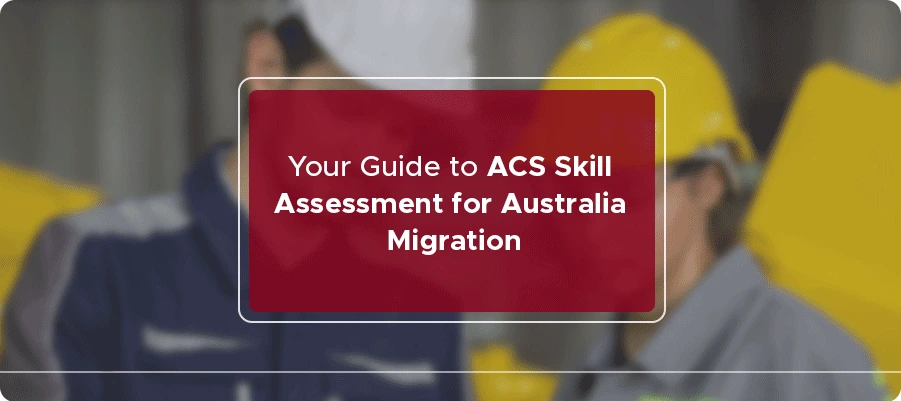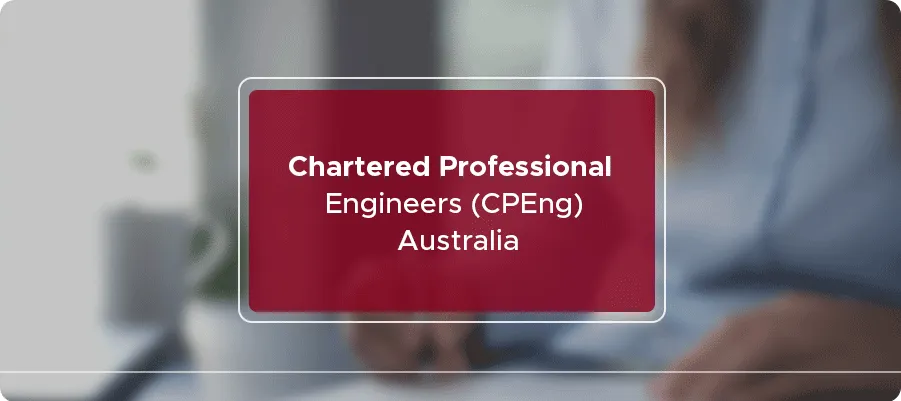
How can you get an Australian Onshore Visa?
Australia has long been a sought-after destination for those in search of a new life and better opportunities. So, you need to understand the visa application process if you’re planning to move to this country for your career.
In the realm of Australian immigration, there’s a diverse array of visa options available. One such option is the partner visa, which is further categorized into onshore and offshore types.
Individuals in either a married or de facto relationship can apply for Australia’s partner visa. That will provide them the opportunity to live in the country temporarily or permanently. The partner must be in a relationship with an Australian permanent resident, an Australian citizen, or an eligible New Zealand citizen.
This visa permits the spouse or de facto partner of an Australian citizen to live and work in Australia. The application process offers two visa applications. They are the Onshore Partner Visa application (subclass 820/801) and the Offshore Partner Visa application (subclass 309/100).
The applicant initiates the offshore application from outside Australia. For the Australian onshore visa application, the applicant applies while already within the country.
Australia provides a variety of visa options, and Partner visas fall into offshore and onshore categories. We’ve provided you with a blog that helps you understand onshore visa applications.
Onshore Partner Visa (Subclass 820/801)
The Onshore Partner Visa (Subclass 820/801) is for partners of Australian citizens, PR, or eligible New Zealand citizens. It lets them stay in Australia while their visa is being processed.
Applicants applying for this Australian onshore visa have the potential to stay in Australia. They can stay there during the processing period through the issuance of a bridging visa.
Unlike offshore visas, which you apply for when you’re outside Australia, Australian onshore visas are for people who are already here on a temporary visa only if they want to stay longer or become permanent residents.
On shored detection and processing
The Commission’s concerns about Australia’s system of mandatory detention are shared internationally. The United Nations Human Rights Committee has repeatedly found Australia to breach its international obligations under the ICCPR article.
Learn More: How effectively write and lodge an Expression of Interest (EOI)? 🧑🏽✈️🏆
Common Australian Onshore Visa Types
Below are the common Australian onshore visa types:
Visitor Visas to Other Visas
If you come to Australia on a visitor visa, you have the option to switch to different visas while you’re here. You can explore other paths like student visas or partner visas without having to leave the country.
Student Visas
If you’re an international student studying in Australia, you might have a chance to stay longer by applying for more student visas or looking at different visa options after you finish your studies. This not only lets you keep studying but also gives you a chance to stay in Australia for a more extended period.
Partner Visas
People in a serious relationship with an Australian citizen or permanent resident can apply for onshore partner visas. You can start the process while you’re already in Australia, making it easier for couples who want to build a life together.
Work Visas
Some temporary work visas provide a way to move from temporary to permanent residency. This is good for people who want to keep working in Australia for a more extended time based on their job.
Requirements for Subclass 820 Visa
Applicants need to meet specific criteria to be eligible for the provisional partner visa (subclass 820). It marks the initiation of the onshore partner visa journey.
1. Presence in Australia
Applicants must be physically present in Australia both at the time of application and when they get the visa.
2. Relationship Eligibility
The applicant must be married to (spouse) or in a de facto relationship with an Australian citizen, permanent resident, or eligible New Zealand citizen. For married spouses, this involves a valid marriage under Australian law, mutual commitment to a shared life, a genuine and continuing relationship, and either living together or, if apart, not permanently.
De facto partners must satisfy similar criteria, including mutual commitment, a genuine and continuing relationship, and generally having lived together for 12 months before the visa application (with exceptions).
3. Health and Character Requirements:
Applicants must undergo health examinations and provide evidence of good character.
Learn More: Help prepare the RPL report for the ACS skills assessment ⏱⌛️
Requirements for Subclass 801 Visa
The permanent residency visa (subclass 801) is the later stage after the provisional partner visa. Key requirements include:
1. Ongoing Relationship
Applicants must prove that their relationship is ongoing and sponsored by their partner.
2. Timing of Application
Applicants submit the application for a permanent visa two years after applying for the provisional visa. But, in some cases, authorities may consider immediate eligibility for the permanent partner visa.
3. Circumstances for Permanent Residency
Even if the relationship breaks down before getting a PR visa or if the partner passes away, the applicant may still be eligible for the permanent partner visa. But only under specific circumstances, such as the presence of children or family violence.
Application Process for Australian Onshore Visa

1. Online Application
You can apply for the partner visa online through ImmiAccount. While paper applications are possible, you can submit them online for efficiency and ease of tracking. Lodge a complete and accurate visa application through the Department of Home Affairs website.
2. Evidence Submission
You can use electronic evidence to support the relationship and to show the genuine and ongoing nature of the partnership.
3. Sponsorship Application
The partner or spouse must submit a sponsorship application, providing evidence of eligibility. It might include Australian citizenship, PR, or eligibility as a New Zealand citizen.
4. Health and Character Checks
Applicants and sponsors must meet health and character requirements as part of the application process.
5. Professional Guidance
Considering the complexity of the immigration process, seeking advice from immigration lawyers can be invaluable. A free 10-minute consultation can address specific queries.
Learn More: Australian Visa Options for Qualified Electrical Engineers 🧑🏽✈️🏆
Benefits of an Australian Onshore Visa
Getting an Australian onshore partner visa isn’t about paperwork; it has some advantages. Let’s break down why many folks prefer this route:
1. Access to Medicare
With an Australian onshore visa, you can access Australia’s healthcare superstar, Medicare. You’re covered for doctor visits, hospital staff, and prescriptions. It’s like having a health safety net, convenient while your visa is in the works.
2. Work and Study Opportunities
While waiting for your visa, you can dive into work or hit the books with bridging visas. These special visas act like a bridge, letting you earn a living and study while your leading visa is getting sorted. It’s not about money; it’s about becoming part of the Aussie community.
3. Flexibility in Travel
Guess what? You’re not stuck in Australia during the waiting game. You can go off and, thanks to bridging visas, without messing up your visa progress. Need to visit family or handle some business abroad? No problem.
Taking Care of Your Health
Are you getting sick? No worries. Medicare has your back. It covers many medical stuff, so you don’t have to stress about unexpected health bumps. It’s like having a reliable health buddy during your Aussie adventure.
Work and Study
Bridging visas are for more than show. They let you earn some dollars and hit the books. That means you’re not waiting around but becoming part of the Aussie workforce and learning new things.
Jet-Setting with Bridging Visas
Who said you can’t travel while waiting for your visa? Bridging visas is your ticket to hassle-free international travel. Whether family visits or work trips, you can cross borders without worry. It’s all about making life easier during the visa journey.
Getting on the Australian onshore visa journey opens doors to a new life in Australia. Also, it offers a pathway to accessing benefits and exploring work and study opportunities in international travel.
Learn More: High-paying IT and ICT jobs in Australia: Your Gateway to Success 🧑🏽✈️🏆
Exploring More Visa Options
In Australia, people planning to get married to an Australian citizen can use the Prospective Marriage Visa. This visa helps them come to Australia, marry, and live together as spouses. It’s valid for about nine months, and the couple must marry to apply for a Spouse Visa later.
1. Prospective Marriage Visa
This visa is for those engaged to an Australian citizen, providing a smooth way to move to Australia. For marriage and later to live together as a married couple.
Key Features:
Duration and Validity
- The Prospective Marriage Visa lasts for nine months.
- During this time, the engaged couple needs to get married in Australia.
Transition to Spousal Visa
- After the marriage, the visa holder can apply for a Spouse Visa to stay inside Australia as the spouse of an Australian citizen.
How to Apply:
Engagement Rule
To be eligible, the applicant must engage with an Australian citizen.
Marriage within the Validity Period
- It’s important to marry within the 9-month validity period.
Transition to Spouse Visa
- After marriage, the visa holder can apply for a Spouse Visa to continue living in Australia.
Considerations:
The Prospective Marriage Visa is a good option for couples planning to get married soon. It allows for a smooth transition from engagement to marriage and living as a married couple in Australia.
Learn More: ACS Processing Time for RPL Report.⌛️⏱
2. Bridging Visa
In Australian immigration, sometimes, one visa might expire before the next one gets approved. In such cases, a Bridging Visa becomes crucial. It serves as a temporary bridge, allowing the applicant to stay in Australia. This case occurs while authorities process their paperwork, preventing legal issues.
When you apply for an Australian onshore visa, your current visa may expire before the approval of the next one. In such cases, a bridging visa becomes a crucial solution. This temporary visa acts as a bridge, allowing the applicant to stay in Australia.
It ensures that their paperwork is being processed. It helps them avoid any legal problems associated with unauthorized residence.
Key Features:
Temporary Legal Presence
- A Bridging Visa lets the applicant stay in Australia while waiting for the following visa’s processing.
Different Types, Different Benefits
- Bridging Visas come in various types, each with specific rules.
- Some allow work, while others may not.
- Certain visas decide if the holder can travel abroad.
Benefits for Offshore Applicants
- For those applying for an Australian offshore visa, a Bridging Visa can help with international travel to and from Australia.
Considerations:
Understanding Bridging Visas is essential due to the different types and benefits. It helps onshore applicants keep their legal status and gives flexibility to offshore applicants in their travel plans.
Guaranteed Positive Skills Assessment!
Get High-Quality CDR at an Affordable Price
Conclusion
In conclusion, knowing about more visa options like the Prospective Marriage Visa and Bridging Visa is beneficial. Also, it adds more understanding to Australia’s immigration as each visa type serves a particular purpose.
For onshore applicants, the Prospective Marriage Visa is a beneficial option for those about to get married. Bridging Visas is crucial for keeping legal status during visa changes. Offshore applicants might find smoother processing and less competition for visas.
Individuals applying for visas offshore might find more straightforward processing routes and encounter less competition for visa quotas. Whether opting for an Australian onshore visa or offshore visa application, seeking professional advice and guidance is vital to navigating the Australian visa system’s intricacies.
With a detailed understanding of these differences, prospective migrants can make informed decisions aligned with their objectives, ensuring a smoother and more successful journey through the visa application process.
CDRReportWriters is available to provide you with details of both onshore and offshore partner visas. It’s important to note that both these visa options entail similar rights and eligibility requirements. Additionally, you can get information about skill assessment, RPL reports, and related services.





